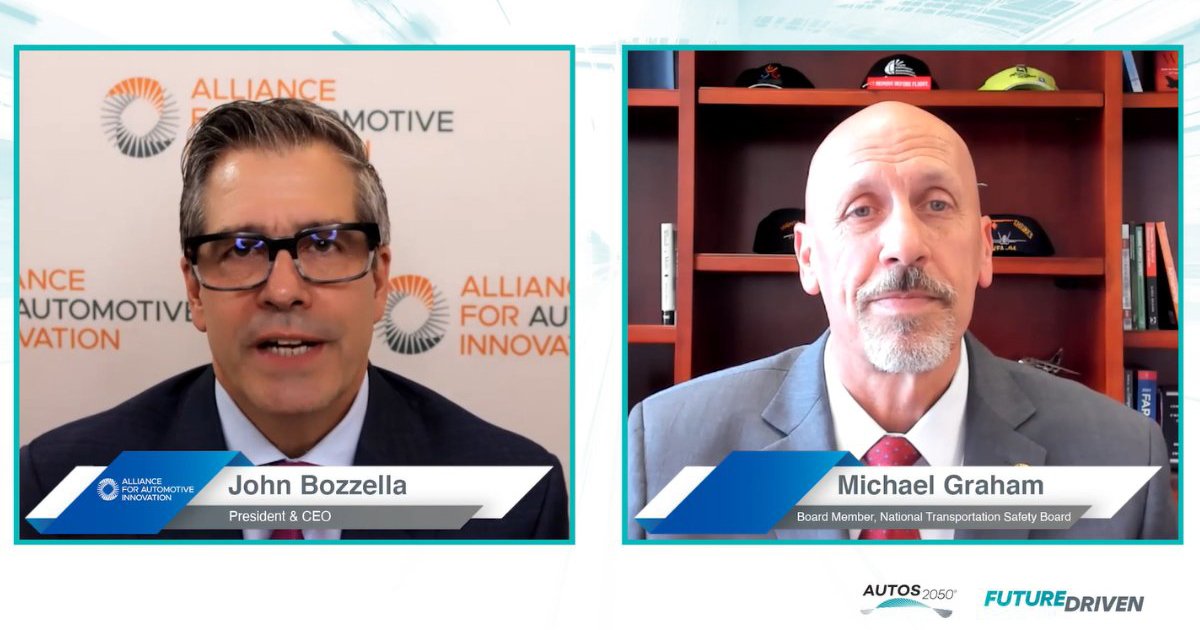
WASHINGTON — Regulatory uncertainty is delaying the widespread deployment in the U.S. of a technology that could improve road safety and provide environmental and efficiency benefits, according to the Alliance for Automotive Innovation.
In a webinar Tuesday, John Bozzella, CEO of the alliance, said the private sector is “heavily investing” in vehicle-to-everything — or V2X — technology but that the U.S. also needs “a regulatory and policy environment that supports and facilitates V2X adoption and use.”
V2X allows vehicles on the road to communicate wirelessly with other vehicles and infrastructure such as traffic signals, but the technology has not yet been widely adopted by automakers and other stakeholders in U.S.
When connected, vehicles can transmit data such as GPS location, acceleration, predicted path and driver controls to other vehicles, and infrastructure can transmit data to those vehicles about upcoming hazards and road conditions, according to Michael Graham, a member of the National Transportation Safety Board.
“This could save thousands of lives and prevent or mitigate millions of crashes,” said Graham, citing a NHTSA study that estimated V2X technology could address up to 80 percent of all crashes involving nonimpaired drivers.
A Trump-era decision in November 2020 by the Federal Communications Commission to shift a majority of a wireless spectrum block designated for auto safety, including V2X, has further hindered widespread deployment, Graham said.
In a June 2021 lawsuit challenging the decision, the Intelligent Transportation Society of America and the American Association of State Highway and Transportation Officials argued the FCC overstepped its authority when it allocated the portion of the 5.9-gigahertz spectrum that had been reserved for the auto industry to other businesses.
During the webinar hosted by the alliance, Graham pointed to a fatal bus crash in Mount Pleasant, Pa., in 2020 as “the first opportunity for the NTSB to directly address V2X issues in an accident report” since the FCC’s regulatory action. The board identified harmful interference from out-of-band emissions and regulatory uncertainty as two problem areas.
“We found that recent regulatory action by the FCC allows for harmful interference from unlicensed devices and threatens the deployment of V2X technology,” he explained. “Therefore, we recommend that the FCC implement appropriate safeguards to protect V2X communication from that harmful interference.”
The alliance, in conjunction with the virtual event, released 10 policy recommendations on V2X that it says can create a policy and regulatory environment to support wide-scale deployment in the U.S.
The recommendations include resolving any “harmful interference to V2X operations” in the 5.9 GHz band and directing the U.S. Department of Transportation, FCC and other stakeholders to work together to identify additional suitable spectrum for the technology.
They also suggest considering inclusion of V2X as a recommended safety technology in NHTSA’s New Car Assessment Program and call for requiring the Transportation Department or the White House to develop a comprehensive national V2X strategy in coordination with other federal agencies and industry stakeholders.
“At the NTSB, we recognize industry scars from the recent regulatory upheaval, but we cannot let those scars prevent us from realizing the benefits of V2X,” Graham said. “The only path that remains is forward.”